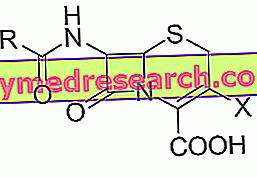Physiological aspects of the use of nutrients (carbohydrates and fats) in athletic performance, rest and body composition
By Dr. Antonio Parolisi
Many modern conceptions of the practice of physical activity persist in opposing what the physiology applied to sport has taught us for more than a century; in particular with reference to the use of energy substrates during muscular work and at rest.
The basic concept is that, regardless of the physical activity of an individual, the energy available is never provided by a single nutrient, but by a mixture of carbohydrates and fats depending on the activity itself. The proteins, in normal physiological conditions therefore not atypical as an excessive or total depletion of glycogen from the liver and from the muscles, do not have an important contribution, therefore their rendering for energetic purpose can be considered negligible.
The ratio, in percentage, of carbohydrate consumption compared to lipids is inversely proportional (that is, as one increases, the other decreases) compared to Vo2max (maximum oxygen consumption) or maximum aerobic power.
With reference to Figure 1a, it can be seen that the greater the use of oxygen during a physical effort, the greater the consumption of carbohydrates will be; this is explained by the "respiratory quotient" (QR), or the relationship between the production of carbon dioxide and the use of oxygen (QR = CO2 / O2). In the case of carbohydrates, the respiratory quotient has a numerical value of 1.00, meaning that the quantity of carbon dioxide produced is equal to the quantity of oxygen used.

Fig 1a Carbohydrate consumption according to Vo2max
Biochemistry teaches us that when there is no oxygen (and therefore an anaerobic test) in glycolysis, as a phenomenon of energy release due to effort, glucose is transformed into pyruvic acid and consequently into lactic acid. This leads to accumulation of lactate, with a consequent reduction in performance capacities. This situation is observed in short-lived and high intensity specialties such as 100 meters in swimming, 400 meters in athletics or in series of 8-15 repetitions with a duration of 30 to 60 seconds of continuous voltage, in a classic set of muscle at an intensity equal to 75-80% of 1RM.

Fig 1b Fat consumption according to Vo2max
With reference to Figure 1b, it can be observed instead that the lower the consumption of oxygen and the greater the use of fat is. In the case of lipids the respiratory quotient has a numerical value of 0.7, therefore the availability of oxygen is higher than the carbon dioxide produced: this means that during a low intensity effort (eg a walk), there being oxygen available (aerobic exercise), the glucose molecule is reduced to pyruvic acid without lactic acid formation. Pyruvic acid subsequently enters the Krebs cycle, where the oxidation of glucose and fatty acids will be completed.
Paradoxically the maximum consumption of fat would be had if the aerobic power approached basal values, and being the Vo2max almost in direct proportion with the heartbeat, should occur heart rates of very few beats per minute. Absurd situation, achievable only in theory.
I remember talking about "percentages of energy substrates" and not grams. Those will come later ...
At this point it seems evident that the carbohydrate and lipid oxidations for energy production must be appropriately combined, creating the right proportions in relation to the Vo2max. (fig 2).

Fig 2 Overlaying the graphs we observe the percentages of the substrates used at a precise percentage of the vo2max
During the practice of a sporting activity, as in the case of a person who is engaged in a race or in any activity of high intensity equal to or greater than 75% of the maximum heart rate (which corresponds to more than 60% of the Vo2max ), the main energy sources are carbohydrates and secondly fats, roughly in the respective percentages: about 70% carbohydrates and about 30% fats. I repeat the protein intervention is negligible, in fact the "non-protein respiratory quotient" is defined.
Obviously this ratio will vary depending on the Vo2max, in fact if the intensity increases up to 90% of the HRmax the percentages will change: carbohydrates around 85% and fat around 15%. If instead it will decrease up to 50% of HRmax, the percentages will be: carbohydrates around 40% and fat around 40% as it happens in a state of rest. This last point should make us think ... Be lenient but the speech is always approximate, even if conceptually it works just like that. It's the physiology!
Following a medium-high intensity aerobic activity, such as that of an endurance athlete (cycling, marathon, cross-country skiing, etc.), enzymatic and cellular adaptations (increase in mitochondria) occur that improve the capacity of muscle oxidize triglycerides, therefore adipose tissue, in order to reproduce large amounts of energy for exertion. Such adaptations will not result in weight loss as the main result but a modest reduction in body weight due to the loss of water following the use of carbohydrates. In medium-high intensity efforts, fats are used in very low percentages, so the weight loss effect is reduced.
It is important to remember that a carbohydrate molecule is linked to 3 water molecules and this explains the weight loss following the use of this substrate. This is also one of the reasons why, following a hypocaloric diet, in the first few weeks there is a considerable reduction in body weight.
The aerobic activity remains, however, always, the best weapon to improve the efficiency of the cardiovascular system, as well as to favor the elimination of toxins, the production of endorphins and the relative state of well-being, a better use of oxygen and many other advantages that only this practice offers on condition that one devotes oneself with moderation and within the physiological limits in order not to overload the system.
Aerobic activity, therefore, can undoubtedly lead to a drop in body weight due to the loss of water and modest lipid quantities, but this condition will be limited and not lasting. Unfortunately, this is not the best way to lose weight, and therefore to reduce body fat. Never confuse the concepts of losing weight and losing weight! The first refers to the descent of the balance's needle regardless of the origin of this loss, while the second refers to the loss of fat mass in favor of the lean one. The secret is right here!
At this point it seems clear that to have an effective use of fats and to a lesser extent from carbohydrates, we should rely on rest, because, as previously stated, the lower the heart rate and the relative Vo2max the greater the percentage of oxidized fat compared to carbohydrates.
Some might think, therefore, that to get rid of adipose tissue you just need to sit comfortably in an armchair while watching television or listening to good music or maybe reading a funny book.
In principle, this concept is not entirely wrong, but some fundamental conditions must be met, namely: 1) reduction of resting heart rate (HHR); 2) increase in basal metabolism; 3) glycemic control; 4) customization of the caloric quota.
CONTINUE: Part Two »



